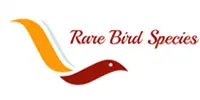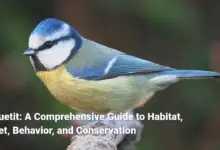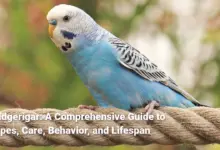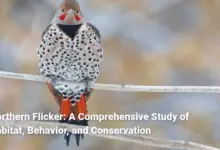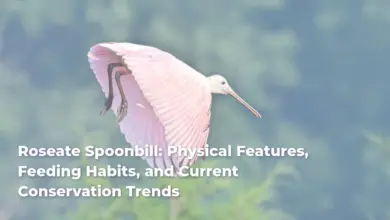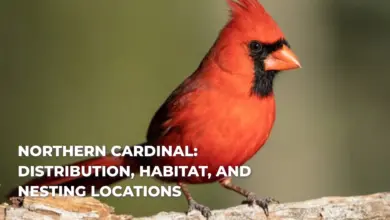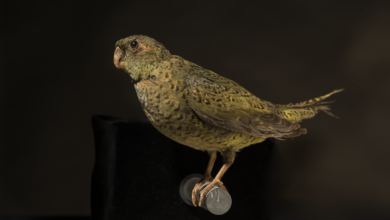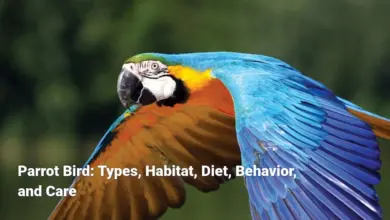Cockatiel Parrot: Guide to Care, Training, Health and Breeding
Everything You Need to Know About Keeping Your Cockatiel Healthy, Happy, and Well-Behaved
Cockatiel Parrot: A Comprehensive Guide
Cockatiel Parrot, with their charming personalities and vibrant plumage, have secured a special place in the hearts of bird lovers around the globe. These affectionate little parrots are native to Australia and belong to the family of cockatoos, characterized by their playful demeanor and ability to mimic sounds with surprising clarity. Whether adorning a home as lively companions or dazzling owners with their charismatic antics, cockatiels are truly captivating creatures. Their manageable size, intelligence, and social nature make them an ideal choice for both first-time pet owners and seasoned avian enthusiasts.
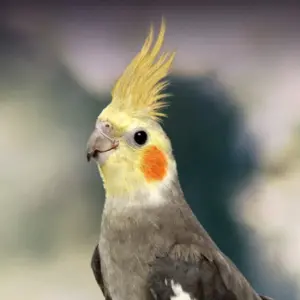
In this comprehensive guide, we’ll delve into the fundamental aspects of cockatiel care and maintenance, their dietary needs, ideal cage setup, and the grooming tips necessary to keep them healthy and happy. We’ll also explore their behavior and training, discuss their health and wellness concerns, and outline effective socialization strategies to strengthen the bond between cockatiels and their human companions. Additionally, we will touch on the intricate process of breeding Cockatiel Parrot and provide insights into their stunning colors and varieties. This guide aims to ensure that you have all the knowledge you need to provide a loving and enriched environment for your feathered friend, making their presence in your life all the more rewarding.
Care and Maintenance of Cockatiel Parrots
Caring for cockatiels involves a comprehensive approach focused on their diet, environment, and mental stimulation, which are essential for ensuring their health and well-being. Just as we invest time and energy into nurturing our relationships, attention to these aspects significantly enhances the quality of life for your cockatiel.
Best Diet for Cockatiel Parrot
A balanced diet not only keeps cockatiels healthy but also mitigates many common health issues. A proper dietary routine can be seen as a symbiotic relationship; just as plants thrive with the right nutrients, so too do our avian companions flourish when provided with a nourishing diet. Here are the primary components to consider:
- Pellets: High-quality pellet formulations should make up 40-60% of your cockatiel’s diet. Brands like RoudyBush, Harrison’s, and Vetafarm offer excellent options tailored to their nutritional needs.
- Seeds: While seeds can be enticing for cockatiels, they should constitute about 15-30% of their diet. A mixture that includes millet and sunflower seeds is ideal but should not be the primary source of sustenance due to high fat content.
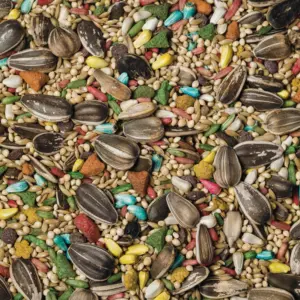
Seed - Fruits and Vegetables: Fresh fruits and vegetables can account for 20-30% of their diet. Options like carrots, broccoli, spinach, apples, and grapes provide essential vitamins and nutrients, and introducing these foods early encourages acceptance.
- Protein Sources: Occasionally, offering cooked eggs, lean meats, or insects like mealworms can satisfy their protein needs. However, these should be seen as treats rather than staples.
- Fresh Water: Clean water should be available at all times and changed regularly to prevent bacterial growth.
| Food Component | Percentage in Diet | Recommended Types |
|---|---|---|
| pellets | 40-60% | RoudyBush, Harrison’s, Vetafarm |
| seeds | 15-30% | Millet, sunflower seeds |
| fruits and vegetables | 20-30% | Carrots, broccoli, apples |
| protein sources | occasional treats | Cooked eggs, insects |
| water | always available | Clean, fresh water |
Ideal Cage Setup for Cockatiel Parrot
A cockatiel’s home should be a safe sanctuary that promotes their health and happiness. Think of it as crafting a cozy abode; just as we choose our homes carefully, creating the right environment for your cockatiel is paramount. Here’s how to construct the ideal setup:
- Cage Size and Type: Aim for a cage that is at least 24 inches wide, 18 inches deep, and 24 inches high. A horizontal design is preferred, allowing them space to fly back and forth.
- Bar Spacing: Ensure bar spacing falls between 1/2 to 3/4 inch to prevent escapes and injuries.
- Cage Accessories:
- Perches: Use perches of varying sizes and materials; natural wood supports foot health.
- Food and Water Dishes: Stainless steel bowls are easy to clean and should be placed away from perches to avoid contamination.
- Toys: Provide a diverse selection of toys that promote foraging and mental stimulation, rotating them regularly to prevent boredom.
- Cage Liner: Use paper or newspaper at the bottom of the cage for easier cleanup while allowing you to monitor droppings for health indications.
- Ideal Placement: Position the cage in a lively area of the home, avoiding direct sunlight and drafts, while ensuring one side is against a wall for security.
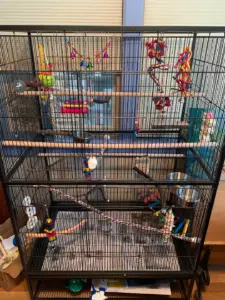
Grooming Tips for Cockatiel Parrot
Regular grooming helps maintain your cockatiel’s physical health and wellbeing. Think of grooming as a vital wellness check-up; it not only beautifies but also ensures your bird is functionally sound. Here are essential grooming practices:
- Feather Care: Monitor their feathers for molting and damage. During molting, additional nutrients and a calcium supplement can support growth.
- Nail Trimming: Use bird-specific nail clippers to maintain nail health. Typically, nail trimming is required every few weeks.
- Beak Maintenance: Provide chewable toys to help keep the beak naturally trimmed. Schedule a vet visit if you notice any abnormalities.
- Bathing: Encourage regular bathing with shallow dishes or mist sprays. This keeps their feathers clean and healthy.
- Veterinary Care: Routine visits to an avian veterinarian are essential for check-ups and vaccinations.
By following these guidelines in the care and maintenance of cockatiel parrots, you’ll foster a loving environment that enhances their quality of life significantly. For comprehensive references about cockatiel care, notable sources include “Caring For Feathers,” “Pet Advocacy Network,” and “The Spruce Pets.”
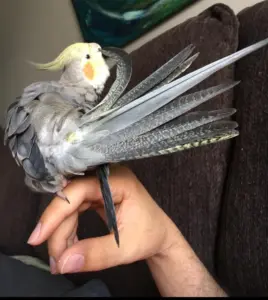
Behavior and Training of Cockatiel Parrot
Cockatiel Parrot possess a rich tapestry of behaviors that reflect their emotional states and social inclinations. Understanding these behaviors can greatly aid in training and interaction. It’s akin to learning a new language; grasping the nuances of their signals allows for a smoother communication channel.
Understanding Cockatiel Parrot Body Language
Interpreting your cockatiel’s body language is like reading a book without words. These subtle nuances reveal their feelings, helping you respond appropriately. Here are key indicators to decipher:
- Crest Position:
- Raised: Indicates excitement or happiness.
- Flopped Back: Signifies relaxation.
- Drooped: May suggest stress or illness.
- Body Posture:
- Leaning Forward: Indicates interest or excitement.
- Puffing Up: May denote anger or a sense of threat.
- Head Movements:
- Up and Down Nodding: Often requests attention or food.
- Tilting: Signifies curiosity.
Effective Training Techniques for Cockatiel Parrot
Training cockatiel is a rewarding endeavor that deepens your bond. Employing effective training techniques can transform your training sessions into enjoyable experiences for both you and your feathered companion.
- Building Trust: Spend quality time establishing a bond through gentle interactions, treats, and socialization. Trust sets the foundation for effective training.
- Positive Reinforcement: Utilize treats and praise to reward desired behaviors immediately. Cockatiels respond well to millet or fruits as rewards.
- Simple Commands: Begin with basic commands like “step up” or “come.” Use a calm voice and reward compliance.
- Interactive Sessions: Keep training sessions to 10-15 minutes to avoid boredom and maintain focus.
- Gradual Progression: Introduce more complex tricks as your cockatiel masters the basics, breaking tasks into manageable steps.
- Consistency: Use the same terms and rewards consistently to help your cockatiel learn most effectively.
By understanding cockatiel behavior and employing positive reinforcement, owners can create a nurturing environment that promotes training success and fosters a strong connection.
Health and Wellness of Cockatiel Parrots
Maintaining cockatiel health involves vigilance and proactive care. Just as we regularly visit a doctor to safeguard our health, our feathered friends require similar attention to thrive.
Common Cockatiel Parrot Health Problems
- Respiratory Infections: Symptoms include sneezing, difficulty breathing, or abnormal vocalizations. These can arise from environmental factors like drafts and stress. Maintaining clean living conditions can help prevent these issues.
- Fungal Infections: Aspergillosis, a common fungal infection, can lead to severe respiratory issues. A balanced diet and a clean, dry environment are crucial for prevention.
- Nutritional Deficiencies: Poor diet can lead to serious issues, including feather plucking and lethargy. A varied diet rich in nutrients is vital.
- Parasites: Cockatiels can suffer from both external parasites like mites and internal parasites. Regular cleaning and preventative treatments are essential.
- Psittacine Beak and Feather Disease (PBFD): This viral disease affects the feathers’ health and may lead to extensive feather loss. Early intervention and a stable environment are critical for management.
Preventive Care for Cockatiel Parrot
- Balanced Diet: Ensure your cockatiel receives a variety of foods from pellets to fresh vegetables.
- Clean Environment: Keep the cage and surrounding area clean to reduce health risks.
- Regular Veterinary Care: Routine check-ups with an avian veterinarian help catch potential health issues early.
- Mental Stimulation: Interactive toys and socialization keep your cockatiel engaged and healthy.
- Behavior Observation: Regularly monitor behaviors for signs of illness. Changes in eating or activity levels can signal health issues.
By prioritizing these aspects of health and wellness, you can provide your cockatiel with a long and happy life full of joy and companionship.
Cockatiel Socialization and Interaction
Socialization is the bedrock of a cockatiel’s well-being. Engaging with your bird isn’t just fun; it’s essential for fostering happiness and reducing stress.
Benefits of Socializing Cockatiels
- Mental Stimulation: Interaction provides essential mental engagement.
- Emotional Well-Being: Regular socialization helps reduce loneliness and anxiety.
- Physical Health: Playtime encourages exercise and prevents obesity.
- Behavioral Development: Socialization fosters communication skills.
- Reduction of Aggression: It minimizes distress-induced aggression through fulfilled social needs.
How to Bond with Your Cockatiel
- Daily Interaction: Consistent engagement through speaking or singing strengthens the bond.
- Hand-Taming: Gradually introduce your hands with treats, fostering trust.
- Positive Reinforcement: Reward desired behaviors with treats and praise.
- Interactive Play: Offer various toys and engage their curiosity.
- New Experiences: Allow exposure to different environments to increase comfort levels.
- Respecting Boundaries: Let your bird approach you at its own pace.
By actively socializing your cockatiel and engaging in bonding techniques, you will help it thrive both emotionally and physically.
Breeding Cockatiels
Breeding cockatiels requires careful planning and understanding. As beautiful beings, the process of breeding can be deeply rewarding, both for the breeder and the vibrant chicks that emerge.
Breeding Conditions for Cockatiels
- Age and Health: Both the male and female should be at least 18-24 months old, ensuring maturity.
- Living Space: Allow ample space for both birds to foster bonding and mating.
- Nest Box: A suitable wood nest box lined with soft materials is essential.
- Lighting and Environment: Mimic natural cycles to stimulate breeding behaviors.
- Diet: Provide a nutritious diet rich in protein and calcium.
Cockatiel Egg Care and Incubation
- Egg Laying: A hen may lay between 4-6 eggs over a few days, which the parents will naturally incubate.
- Incubation Duration: The eggs typically hatch after 18-21 days.
- Temperature and Humidity: Regulate temperature to around 99.5°F with humidity levels between 40%-60%.
- Turning the Eggs: If incubating artificially, turn eggs gently to ensure embryo health.
- Post-Hatching Care: New chicks require warmth and proper feeding.
By following these precise guidelines, cockatiel breeders can cultivate healthy chicks, ensuring their future in loving homes.
Cockatiel Varieties and Colors
Cockatiels come in an array of beautiful colors and varieties. Understanding these variations can enhance your appreciation for these birds, as each possesses unique traits.
Popular Cockatiel Color Mutations
- Normal Gray Cockatiel: The standard coloration found in the wild, often characterized by gray plumage and vibrant cheek patches.
- Pied Cockatiel: Recognized for its patchy appearance with extensive white areas, which can be heavy or light depending on the individual.
- Lutino Cockatiel: Known for its bright yellow coloration combined with red eyes, resulting from the absence of melanin.
- Cinnamon Cockatiel: This variety displays a reddish-brown hue, offering a charming alternative to the standard gray.
- Emerald/Spangled Cockatiel: A distinctive variety characterized by a lighter coloration with subtle patterns.
- Albinistic Cockatiel: Featuring snow-white plumage and red eyes, these cockatiels represent a rare mutation.
- Fallow Cockatiel: Characterized by a light tan coloration with distinct eye variations.
By recognizing these different breeds and understanding their characteristics, prospective owners can make informed decisions when selecting a cockatiel that fits their preferences.
In conclusion, cockatiels are incredibly rewarding pets that require thoughtful care and attention. By adhering to the guidelines provided in this comprehensive guide, you can ensure your cockatiel leads a thriving and fulfilling life. Whether through nurturing their health, fostering socialization, or understanding their unique traits, cockatiels will undoubtedly bring endless joy and companionship to your home. Your journey with these beautiful birds will be rich with delightful moments, making the investment of time and energy truly worthwhile.
